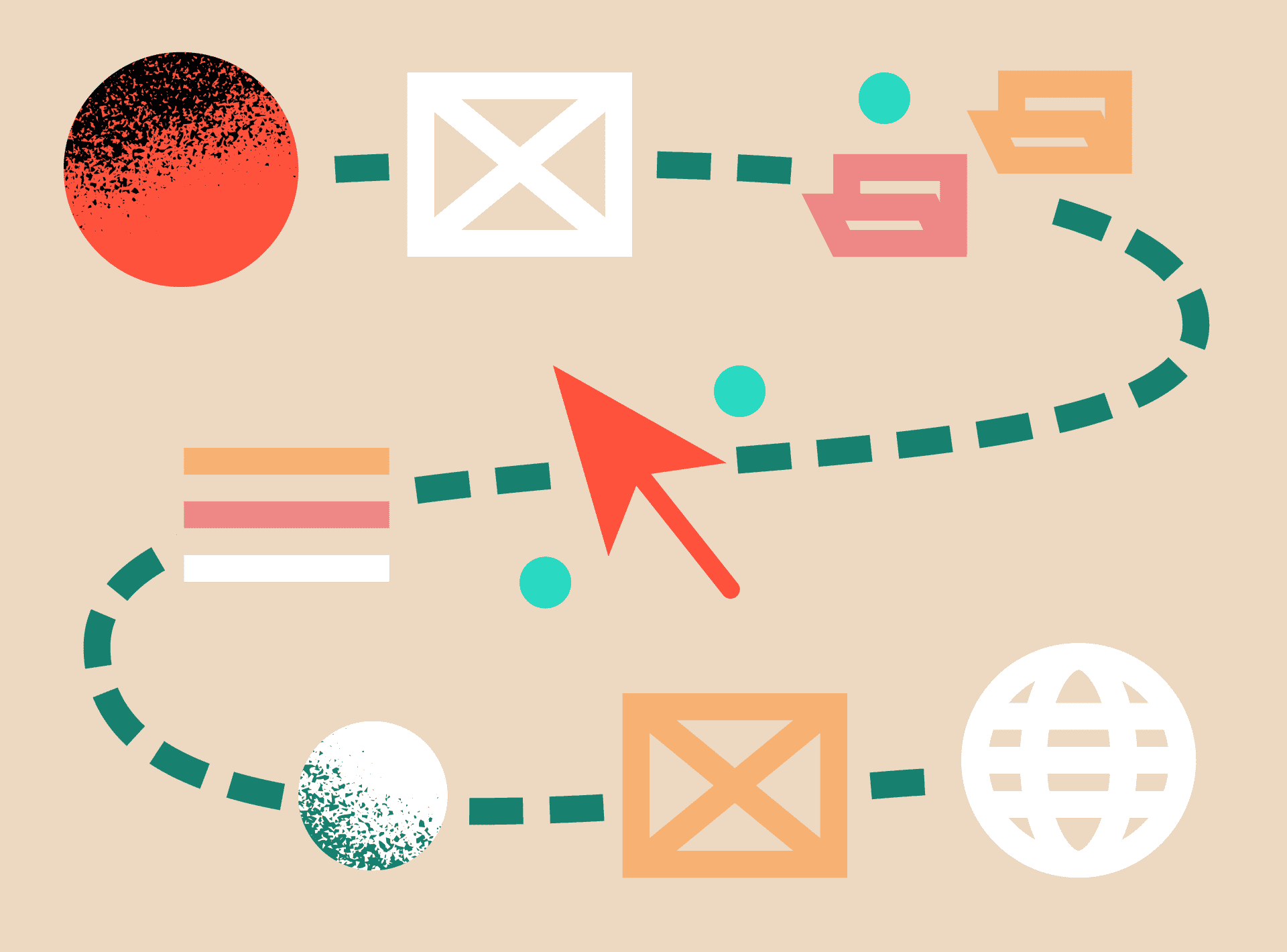If you are not online you don’t exist. This popular saying is strangely apt. Therefore, in order to establish your online presence and to do so in a consistent way, you need to take a closer look at web content management.
Today, content plays a crucial role in the digital world. From articles and blog posts to YouTube videos, it helps you refine your online activity, boosts your SEO efforts and educates potential customers. Content can help you achieve a variety of business and marketing goals. However, in order to be successful, you need a well-thought-out strategy and a tool that will help you create, manage, optimise, and update the content that you share online. And that’s what web content management is all about. Today, usually, content management happens via CMS platforms. In this article, we’re going to show you everything you need to know about them in order to streamline your online activity.
What web content management comprises
In fact, web content management is a very extensive discipline that comprises:
- Web management (creating and managing web pages and landing pages)
- Content analytics (how your content performs)
- Centre of excellence (we’ll explain that in a few moments)
- Migrating content-related platforms and tools (sometimes that’s just a necessity)
- Digital support (content does not exist in a vacuum – it requires proper UX and graphic background)
- Building relationships with authors, external partners, digital platforms, etc.
All in all – quite a lot of work to do. But let’s start with the beginning.
What is web content management?
In short, it’s a service that’s based on managing your online channels. Typically, web management comprises creating websites and landing pages. Also managing them so that they meet the company’s business and marketing goals. Web content management is your starting point if you want to introduce content management to your strategy, but your online activity is poor (e.g., you have just a simple business-card website).
You have to measure your content (AKA content analytics)
Every content you create should be purposeful. You have to know who you write to and why. Content analytics is a service that analyses all the content that you produce and measures its performance, both from the users’/customers’ and SEO perspectives. If you want to be successful, you must write your content in compliance with Google requirements and useful and attractive for your target audience.
Thanks to content analytics, content editors can find out more about their efforts. You can discover whether users are interested in your texts and what they are specifically interested in. Typically, content analytics is implemented using marketing analytics tools such as Google Analytics, but there’s more. Even tools like AnswerThePublic can help you discern what Google users are interested in. This way, you can give it to them and create more compelling and exhaustive texts.
Ok, so now you know that you need a website offering a way to publish content and that you have to measure the effectiveness of your efforts. But how can you actually do that? What do you need to publish content online and measure its effectiveness? The answer is CMS.

What do you need to know about CMS?
This abbreviation stands for a content management system or, sometimes, WCMS – web content management system. Today, CMS platforms are cloud-based software which enables website owners, managers to create, edit, manage, optimise, plan and publish all the pieces of content that they produce for web purposes. A great example of a CMS platform is WordPress. An open-source software enabling you to create a website from scratch and then update and develop it as your business grows.
What you need to know is that CMS platforms are not uniform. They are two major groups. Let’s talk a bit more about that.
Differences between enterprise CMS and small-scale CMS
In general, both these types of CMS are pretty much the same. The difference lies in their capabilities. Ordinary CMS like WordPress is mainly about one communication channel – your website. Of course, you can use many plugins and extensions to thrive in other channels. For instance: social media and e-commerce, but that’s not the main function of this platform.
On the other hand, enterprise content management software enables users to manage content in many different communication channels and on a much bigger scale – from websites, through social media, up to mobile apps and other non-standard channels. Moreover, with enterprise-grade CMS, you can manage content teams spread around the globe and manage branded content creation in many different languages and for just specific local markets. Indeed, this solution is primarily for large companies operating internationally.
A good example of such an enterprise platform is Sitefinity CMS, one of our primary working tools. Within this platform, you get access to what they call multichannel management:

That’s what enterprise CMS is all about – you get an all-in-one solution that enables you to manage all of your content and communication channels within one dashboard. Sitefinity even comes with digital asset and document management, and that takes us to the brand portal question.
What is brand portal?
There is no content management without digital assets and documents. Every article you write, every screen you paste, every infographic you craft – these are all brand assets and are extremely important in web content management. A brand portal is an online space where you can keep all these assets and more. A brand portal is often a place where content creators and managers can find all the necessary information and guidelines. On the “production level”, it can be an online library in the form of a digital asset management system (DAM), but there is nothing wrong with storing your files and guidelines in your CMS platform.
What if your CMS is no longer sufficient?
That can be a serious problem! Some time ago, you decided to work with a small-scale CMS, and since then, your company has developed substantially. What should you do in such a situation? If your current content management platform (or any other content-related tool) is truly insufficient, you have to migrate to an enterprise-grade one. The more assets and web pages you have, the more complex and time-consuming this process will be.
But in the long run, it will surely be beneficial – you will be able to grow online again. At Admind, we help our clients with migrating their digital assets from one place to the other. Drop us a line to find out how we can help you.
Now, let’s take a look at all the important benefits advanced and popular CMS platforms offer.
Benefits of using CMS platforms
An all-in-one solution
An enterprise-grade CMS platform helps you keep everything content-related within one dashboard. You have an online space for all your texts, graphics and other digital assets and brand guidelines. Moreover, you can do whatever you want with your content on a webpage without leaving the platform. Finally, you can tailor your content for various brands and languages, markets and target audiences, and you can even cooperate with your team members across the globe. If you run an international business, this is a massive work simplification.
Customisability
Enterprise-grade platforms are almost always highly customisable. The majority of them are integrated with other tools and solutions that you already use (here, we mean especially the Office suite, analytics tools, social media management tools, and others). All the puzzles can be set exactly the way you want. If there is a problem with integrating a specific tool, an experienced team will most likely be able to help you with that.
Personalisation
Today, that’s one of the marketing buzzwords. Everything you do is personalised, from product recommendations to content. Thanks to an advanced CMS platform, you will be able to create content for different target audiences. Even create personalisation scenarios to determine what each user should see when browsing your website.
A future-proof solution
More and more CMS platforms use solutions that are flexible and help you grow online. For example, many of them use so-called API calls so that they can easily communicate with other tools, plugins and platforms. As a result, once you find your perfect enterprise-grade platform, you won’t have to ditch it for many years to come.
To prove our point, we’ve written a comprehensive article on how web content management should be implemented in a global, demanding company. We encourage you to give it a read!
How to implement digital content management solutions in a global company

CMS is not enough – what do you need more?
Lastly, we want to mention a few more elements that play a valid role in web content management. You see, although CMS platforms can be extremely useful and streamline your everyday work, they are not the ultimate answer to all your content-related questions. You still need a strategy and a team that will be responsible for implementing it. For starters, creating a centre of excellence (COE) would be very helpful.
What is COE?
A centre of excellence is an online space that comprises all the resources and competencies that are used to attain and sustain performance and value in a specific area. In this situation, a centre of excellence is concentrated on all the content-related issues. Usually, a COE consits of a group of people from different departments (and with different experiences). They work together and come up with ideas and strategies which are used to improve your online visibility.
Digital support
As we stated in the introduction to this article, content does not exist in a vacuum – it requires proper UX and graphic background. That’s why a truly comprehensive content team should consist of graphic designers and UX experts. They will make sure that it’s all attractive and intuitive from the user’s perspective.
Relationships with other entities
Content is not always about your website. If you run a B2B company, you should be interested in working with other website owners and digital platforms in order to promote your content. This is where PR and content marketing overlap. You should be interested in writing guest posts and distributing your articles to other places that are interested in similar content. That’s also a part of your big content strategy.
Summary: Work with an experienced agency
When it comes to content management, there are a lot of things to consider and tools to master. If you feel like it’s all a bit overwhelming, drop us a line. At Admind, we help both global and local players in crafting and implementing effective content strategies. We also run several brand portals and centres of excellence for our clients (see our ABB project).
We will gladly help you with your content needs as well! Let‘s get in touch.

